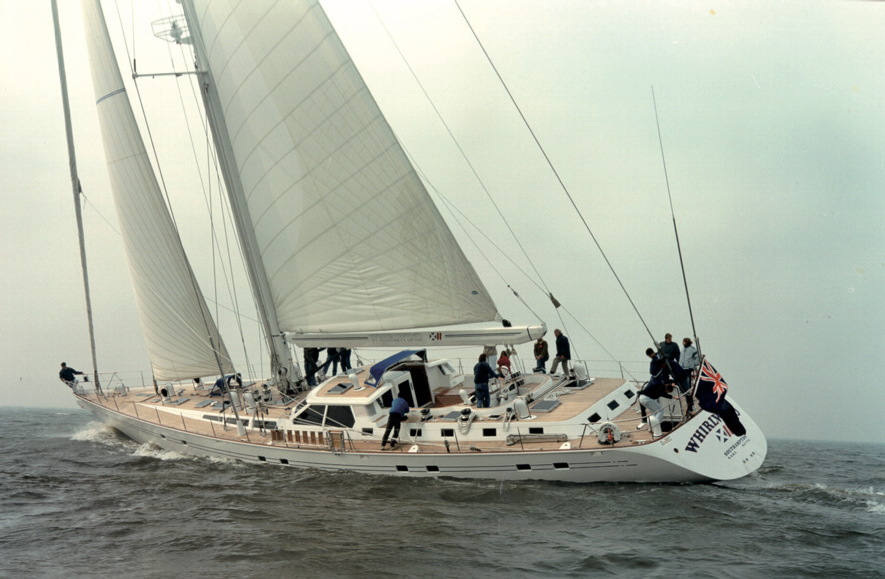Cross currents
We sit down with Ron Holland, the master designer whose elegant and fast creations have pushed the boundaries for decades.
26 February 2020
Despite sailing’s enviable eco credentials, global sales of motor yachts continue to proportionally increase against their wind powered counterparts.
There are various reasons for that; the perceived complexity and relative expense of sail boats, more space on powerboats (a fallacy compared to catamarans especially), and the extra time required to achieve a reasonable level of competency aboard a sailing yacht.
Ocean spoke with one of sailing’s most celebrated designers Ron Holland, who believes part of the solution is creating an easy to handle relatively small yacht to get more people behind the wheel or helm.
Where do think the future of sailing design is headed?
I think they (technical and cruising sides) will continue to diverge, because there are a very limited number of sailors capable of pushing the limits of the technology. Those who aren’t into that and that’s the majority of sailing people are happy to enjoy their time doing whatever interests them. The market for sailing yachts is becoming more fragmented. The figures (re strong global sales of motor yachts), are interesting because I had thought the price of fuel may have resulted in a slow rise in sailing’s popularity.
Is that a problem for the sport?
I don’t think so. You accept the differences, in racing between the classes. Having said that, in the IRC (racing) sphere they are getting bigger fleets than have had for a few years. I think what’s happening generally is that people are time poor, the boats have gotten more expensive, relatively, so it’s actually a very positive thing that those classic races such as Rolex Fastnet and the Rolex Sydney Hobart are still so popular.
Do production cruising boats need to be easier to sail?
Well, they could be simpler, with for instance self-tacking jibs and no runners. You can’t get a simpler rig than that. Headsail furling and in boom furling have been refined to allow easy sailing. This is the most important development to reduce sailing work load. But I don’t see those type of boats (big-brand production cruisers) being very complex anyway.
The growth in power boats however suggests sailing is still regarded by many potential boat buyers as too complex.
What about sailing superyachts? Are they too complex and expensive?
I’m designing a boat at the moment, a 41-metre schooner, my last big boat. It will be a carbon boat because my client said ‘look I don’t want to pay a premium for carbon but if it’s within the ball-park of aluminium why not have the better technological material?’
They (the Owners) have a 90- footer I designed called Wavelength. The clients were attracted to the look of a schooner. I supported it because I love the idea of my last big boat being a schooner.
I think the limited number of these sailing superyachts which are yes, expensive, will always be a very small market. The White Rabbit (Echo Yachts trimaran featured in Ocean #84), approach is very positive I think. You get low (water) drag and a gigantic usable deck and accommodation area.
How can that emphasis away from performance and exotic materials be shifted?
I don’t believe this emphasis can be shifted. Yacht design has always been Owner influenced and this will continue. That means of course, they (sailing superyachts) will also continue to be expensive. It is however a very small market segment and getting smaller due to all the reasons noted here.
There are a few obvious bright spots though. What about the growth of the catamaran segment?
That is the major area of (sailing) market expansion, because people who are not familiar with sailing don’t like the tipping over, and the relative less volume than a power boat has, so a catamaran solves that. I have been doing boats with Discovery and they have a multi-hull which they have sold quite a few hulls. I’m not involved in the designs of those, but the buyers of those boats just want big volume and single-level living. The latest catamarans are much safer and better sea-handling boats than earlier designs.
How can we attract more people to your average keelboat sailing activity?
I think it’s about affordability. Perhaps something like a modern day J-24.
I did an 11 metre one-design (check what this is), and it’s relatively cheap and fun sailing. A day-sailer that costs nothing to run.
If people were introduced to that kind of sailing after they come out of dinghies, it might change some purchase decisions.
The Discovery 55 which you designed in the late 1990s has stood the test of time. What are the reasons for its continued popularity?
It was conceived by a very experienced cruising couple with the aim of creating a smaller version of a high quality superyacht that a couple could sail around the world. Again, with a self-tacking jib, furling mainsail, and it worked. In the 50ft bracket there’s pressure to put in as many bunks as you can. So, the approach with the Discovery 55 was you will have fewer beds, but it will feel like you are on a real yacht.
What are some of your personal favourite designs?
I always used to say the next boat is my favourite, but there have been some important yachts along the way. I have a soft spot for Whirlwind XII (31 metres, 1986). It was a defining commission and supported what I’d always thought: if done right racing boat technology could have a profound and positive influence on cruising sailing boats. It was also the first sailing yacht over 100 feet in length to be sailed around the world with a small crew.
Ethereal (58 metres, 2009) should also be mentioned because she pioneered new energy solutions, she was the first battery powered hybrid propulsion boat.








